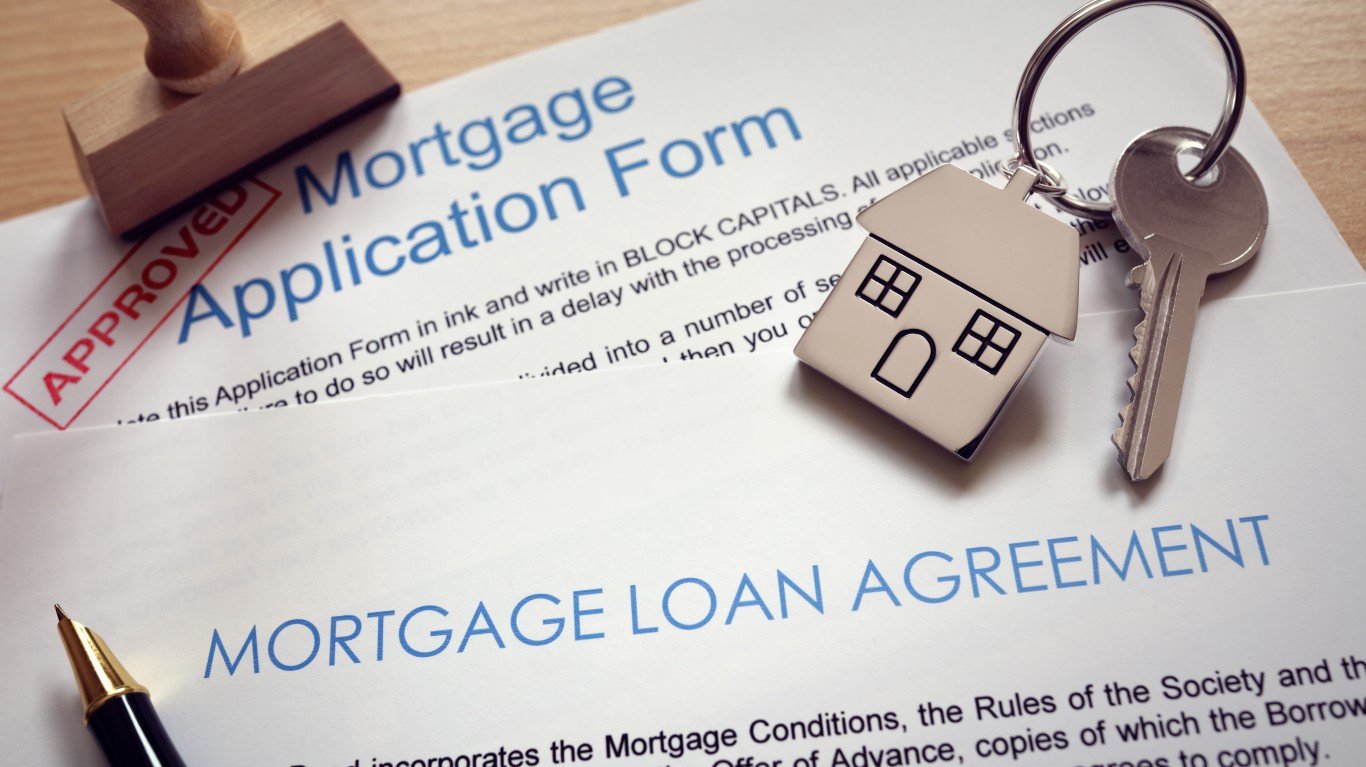

Owning a home is part of the American dream, but seems more out of reach for upcoming generations as prices skyrocket, wages level off and interest rates continue to rise. With inflation rising and falling and the cost of homes hitting all-time highs in some states, buying a home takes vision, planning and discipline. At the end of 2023, the median price of existing homes in the United States was $387,000. It’s expected to rise to $407,000 by 2025. Recently, Freddie Mac (NYSE: FMCC) identified the 30-year-fixed mortgage interest rate at above seven percent, which led to higher monthly mortgage payments.
Fortunately, buying a home isn’t entirely out of reach if you have a plan and stick to it. It may take a few years, some creative budgeting and smart investments, but we have some steps and tips that will help you buy your dream home.
Why Are We Covering This?

When it comes to personal wealth and finance, owning a home is typically the most valuable asset. If home equity is excluded, median wealth decreases by half or more. Owning a home is an important part of building personal wealth. Things like changes in the federal interest rate, bank stability and real estate practices have a direct effect on Americans who want to own a home. Buying a home is an ideal way to increase personal wealth if you can manage it.
1. Decide Where You Want to Buy

Determine first where you want to buy a home. Does your job allow you to live there, or would it require a career change? Once you’ve picked a state and city, research neighborhood trends to find one that works for you. Do you prefer a home closer to all the conveniences of downtown, or are you looking for an area where your kids can grow up and go to good schools? These are important questions to ask before you even start looking at homes.
2. Calculate What You Can Afford

Your “dream” home should still be realistic. Everyone wants to live in a mansion overlooking the Pacific Ocean, but practicalities must be factored in when you consider what you want to buy.
Most lenders advise buyers to look for homes that are three to five times as much as their annual salary. For example, if you make $80,000 a year, your budget would be between $240,000 and $400,000. Before you can get a loan, you’ll also need to have a down payment, and most lenders suggest 20% of the total home price. If you put down less than 20%, you’ll need to purchase private mortgage insurance, which can increase your monthly payment by several hundred dollars.
Lenders also want your debt-to-income (DTI) ratio to be lower than 43% before you get a home loan. To figure this out, add up your total monthly debt payments and divide it by your monthly income. If your DTI ratio is too high, work on paying that down revolving debt before you apply for a loan. Things like DTI and down payment can also affect your interest rate.
3. Decide If You Want to Use a Real Estate Agent

Many buyers decide to strike out on their own to save money, but using a real estate agent does come with some unique benefits. They can provide helpful information on neighborhoods and homes, but if you have the time to do your own research, you may opt out of using one. Real estate agents usually receive their commission from the seller of the house, so it doesn’t cost much more for you to hire one.
4. Get Preapproval and Prequalification

Before you go to make an offer on a home, make sure you can get approval to borrow the amount you need. Lenders will prequalify or preapprove you for certain amounts so you have details about interest rates, monthly payments and overall borrowing totals.
A preapproval isn’t a final lending document by any means. You provide the banker with a few pieces of financial information and they give you a general idea of what you can afford.
5. Start Shopping

You know where you want to live, you’ve saved enough money for a down payment and you know how much you can afford. Now for the fun part. Start shopping for houses in your price range. This process can take months, but this isn’t a purchase to take lightly. Invest time and energy into finding the right property.
When you’re shopping, consider the following things: price, location, commute time, school districts, home type, condition and space. Look closely at the age of the house and if any of the major systems like plumbing or electrical have been upgraded. It may be worth it to sacrifice space for a newer property or to buy something larger that requires a longer commute. Finding the right home is all about assessing your priorities and matching them with the location, and this can take time.
During this process, you may want to have a home inspection done on any potential property. Most lenders also require an appraisal, but the seller may already have one. Coordinate these efforts with the seller and their real estate agent to ensure that you know exactly what you’re getting before you close.
6. Make an Offer and Secure Your Loan

Negotiate a fair price with the buyer. This may involve some back and forth and counteroffers, but make sure you pay what you feel is fair for the property. If you’ve chosen to use a real estate agent, they’ll handle this process for you and walk you through negotiations.
Once a buyer accepts your offer, it’s time to secure a loan. There are many loan programs and a mortgage banker can help you find the best one. Your banker can run through possible scenarios with you before you secure a loan. For example, you may choose higher payments but want to pay your loan off in 15 years rather than 30. You may want to pay more upfront to secure a lower interest rate. Have your banker run through multiple scenarios with you.
Remember there are potential closing costs and fees that many buyers add to their loan. This will increase the total loan amount and can affect your monthly payment. Your mortgage broker will go through these costs with you before you close.
7. Close the Sale

You’ve saved money for years, adjusted your expectations and found your dream home within your budget. You’ve made an offer and secured the loan, and the buyer has accepted your offer. It’s now time to close the sale, and your mortgage broker will walk you through this process.
Closing involves signing documents that complete the purchase, including your loan documents. It can take a few days for your loan to be funded after closing, but once the seller receives the check, the home is yours.
Home Buying Trends in 2024

During 2024, shoppers can expect higher home prices, lower mortgage rates and a lot of competition. Preparing early is one of the best ways to ensure your success when you do find the perfect home.
ALERT: Take This Retirement Quiz Now (Sponsored)
Take the quiz below to get matched with a financial advisor today.
Each advisor has been vetted by SmartAsset and is held to a fiduciary standard to act in your best interests.
Here’s how it works:
1. Answer SmartAsset advisor match quiz
2. Review your pre-screened matches at your leisure. Check out the advisors’ profiles.
3. Speak with advisors at no cost to you. Have an introductory call on the phone or introduction in person and choose whom to work with in the future
Take the retirement quiz right here.
Thank you for reading! Have some feedback for us?
Contact the 24/7 Wall St. editorial team.



